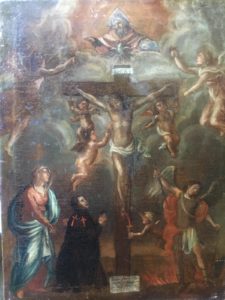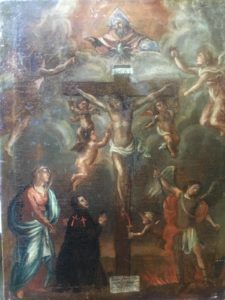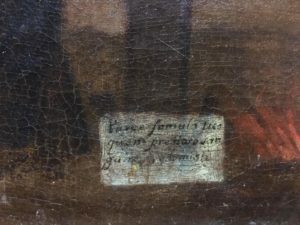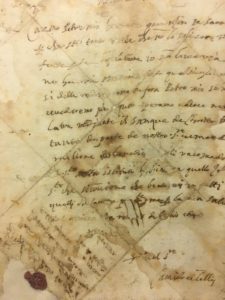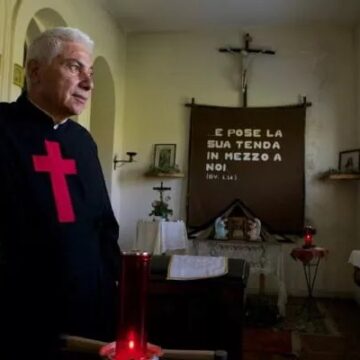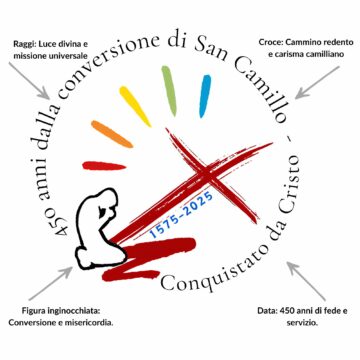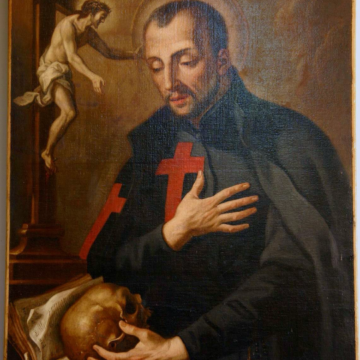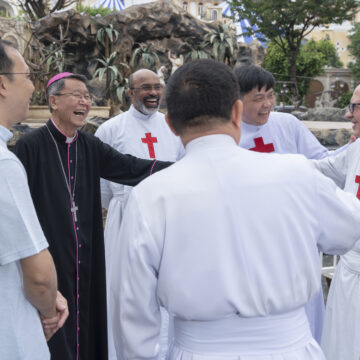Trust in God, and throw your bread into the river of life,
and thereafter you will find it in the sea of eternity.[1]
With Easter we live in a time of hope, moving towards the fulfilment of the plan of salvation: the Passion, death and resurrection of Christ.
Resurrection in Christ as a priceless gift of God’s mercy. “For in hope we have been saved” (Rom 8:24).
The message of Holy Easter leads us to reflect on the figure of the founder Saint Camillus, who, touched by the charity of Christ, was transfigured in spirit, soul and body, living as a son of God, revealing himself as a son of God.
Camillus, as Fr. Vanti left us to write, expressed his spirituality under a twofold aspect: the one common to the saints of the time who had associated the spiritual aspect with humanism through active action that replaced the ascetic isolation characteristic of previous historical periods: a spiritual humanism, and the other personal and distinct linked to the strong conviction of being the expression of God’s will through charity ‘to the poor’.
God is faithful,‘ the dear Saint reminded himself and others, ‘let us trust Him.[2]
A trust and abandonment that was expressed with total serenity in the face of the greatest difficulties because it was absolutely certain that: “to the last of God will be the victory” [3]
This is certainly not the superficial and unconscious optimism of one who does not know the harshness of reality, and who knew it better than Camillo, but it is the unshakeable certainty of one who penetrates the profound meaning of things and sees as if in a watermark the powerful hand of God-Love who disposes and leads everything with a wise and mysterious and disconcerting design. That plan of God’s salvation revealed to us especially since Christ our hope has risen.[4]
This confidence of his is repeatedly evident in his writings. In a letter to Fr Oppertis, having many sick religious at home, he wrote sorrowfully, but confidently: May the Lord be praised for everything, who permits everything for his service (8 May 1593).[5]
Recommending himself to his religious, he said: Let us invoke the most holy Passion of Our Lord and the blood shed for us.
This vision of his was immortalised in a painting that he himself asked of Father Mancini, his confessor; a painting of the crucifix that testifies to how much Camillus needed the reassurance of God-given salvation evoked by the vision of his Son’s blood: Let there be much blood from the wounds of Jesus, so that I, seeing such an abundance of blood, may have greater hope of my health. He recommended himself. He was pleased beyond his wishes, because the painter at the foot of the crucifix portrayed Camillus with the invocation that was so dear to him: ‘Parce famulo tuo, quem pretioso sanguine redemisti; Forgive, Lord, your servant whom you have redeemed with your most precious blood’.[6]
In this painting he wanted the mystery of the Father’s love, made visible in the blood of Christ shed for the salvation of mankind, to be evoked. In the proximity of death he had feared for his own salvation; thus in the painting he clearly expressed his total trust in ‘divine mercy’, professing with tenacious hope that only from God, through the offering of his only Son, is salvation bestowed.[7]
There were numerous testimonies from the sources and from many of the Order’s religious concerning their devotion to the blood of Christ crucified. Indeed, in the last days of his life, he continually invoked the help and mercy of the crucified Jesus. In the saint’s last autograph letter, written on 5 July 1614, he bids farewell to Fr Francesco Pelliccioni in a moving and eloquent testimony:
“My dear Father, you will have patience if I am very brief because I am so ill that I don’t know how to explain and if it were not for your consolation I would not have written… My Father, if we will not see each other again in this one we hope to see each other in the other through the Blood of Christ…“.[8]
Nine days later, on 14 July 1614, caressing the image of the Crucifix one last time with his gaze, he “happily” expired.[9]
[1] Maxims and Sayings of St. Camillus no. XXXII in Il celeste protettore degli Ospedali e degli ammalati: Compendio della vita di s. Camillo de Lellis, Piazza Ferdinando, Cremona, E. Foroni, 1906, 232 ;
[2] Vanti, Mario, Lo spirito di San Camillo de Lellis, Rome: presenza Cristiana, p. 413;
[3] Scritti di San Camillo Al p. Luca Catalano a Ferrara, Naples 27 November 1604 (XLI, p. 247)
[4]Vendrame, Calisto Time of Easter, Time of Hope, in C.I.C. No 124, Year X, 20 April 1980, 137;
[5] AGMI, 6000/2
[6] Cicatelli 1624, 192-193
[7] For an in-depth study on the theme of Camillus’ experience of the cross as the root and hope of salvation cf. Terenghi, G.: La croce di Cristo nell’esperienza spirituale di S. Camillo de Lellis, Roma: Camillianum 1996, p. 71 -97
[8] AGMI, 6000/17
[9] Vanti, Mario, Lo spirito di San Camillo de Lellis, Rome: presenza Cristiana, p. 418;


